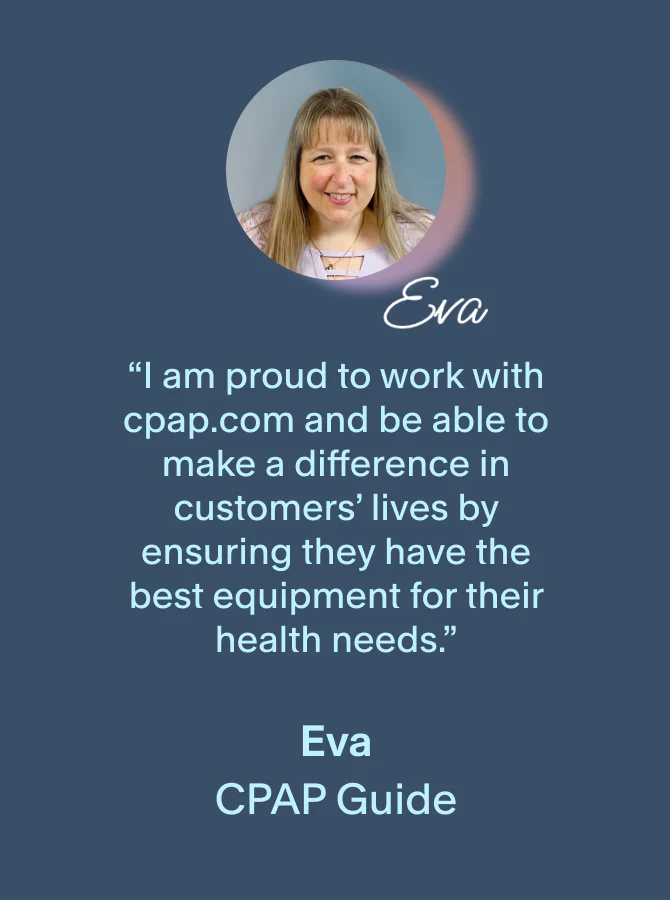Using a heated humidifier helps relieve nasal dryness from CPAP therapy, but can also cause annoying condensation known as "rainout." If you're waking up to water in your mask or hose, or you hear a gurgling sound coming from your equipment, you may be experiencing CPAP rainout.
The good news is that there are several easy solutions to prevent CPAP rainout. By simply adjusting your humidity settings, using heated tubing, or insulating your hose, you can put a stop to this annoying CPAP side effect and get back to sleeping comfortably.
What is CPAP rainout and what causes it?

CPAP rainout happens when humidity reaches an unheated tube and the difference in temperature creates condensation. Then, small droplets of water form and splash against your face causing you to wake up.
Picture what happens to an old window in a warm room on a cold day or a chilled can of pop out in the sun on a hot day—similarly, tiny beads of water build up in your CPAP tubing and trickle down the hose to your face.
Rainout is essentially caused by heated air cooling inside your CPAP hose. The warmer the humidifier air or the colder your bedroom, the more condensation is likely to occur.
If you have the humidifier set to the highest setting, CPAP rainout is almost guaranteed. Luckily, there are several things you can do to avoid or minimize CPAP rainout.
How do I prevent water in my CPAP hose and mask?
The best way to avoid water in your CPAP hose and mask is by trying to closely match the temperature inside and outside of your tubing, but sometimes that isn’t enough to prevent CPAP rainout. You may have to incorporate a hose cover or adjust your CPAP humidifier settings to prevent water from collecting in CPAP hose.

Solutions for rainout
Sleep disruptions from CPAP tubing gurgling or CPAP machine rainout can cause you to feel tired the next day, even if you were in bed for a full eight hours. With sleep apnea, it’s important to set yourself up to get the best sleep possible—and that includes preventing rainout.
Keep equipment dry: Allow your CPAP hose, mask, and humidifier chamber to fully dry after every therapy session to prevent bacteria buildup.
Maintain a consistent cleaning schedule: Wipe or wash your mask each day. Clean all of your CPAP equipment, including tubing and water chamber, with soap, warm water, and distilled vinegar.
Adjust humidifier settings: In general, the best humidity level for CPAP machines is a setting of 3. To help address CPAP rainout issues, you can adjust the settings by 0.5 increments.
Adjust room temperature: Increasing the temperature around your CPAP equipment helps minimize the temperature change that occurs when your CPAP air leaves your machine.
Use a heated hose: Heated CPAP hoses keep the air temperature consistent from the moment it leaves your CPAP machine until it enters your CPAP mask, reducing the chances of experiencing rainout while maintaining humidity levels.
Wrap your CPAP hose: If you don’t want to purchase a heated hose, wrapping your hose in a towel, blanket, or even a specially designed hose cover can help insulate your tubing to prevent rainout.
Store and position your CPAP properly: Place your machine slightly lower than your mattress to prevent water from flowing into your mask.
Replace old equipment schedule: Replacing your CPAP equipment on time prevents air leaks, humidity issues, build-up, and other issues that arise with worn out equipment.
Look for a CPAP machine with Climate Control: Older devices are prone to building up water because they don't have the ability to adjust humidity and temperature effectively. Upgrading your machine to a newer CPAP with better humidifier features and Climate Control can help prevent CPAP rainout before it becomes a problem.
Final Thoughts
Even when treated with the proper CPAP equipment, having sleep apnea can make it challenging to get quality sleep each night. Some experience bloating and some experience skin irritation, but it’s important to maintain compliance since untreated sleep apnea can lead to serious complications. If you’re still facing issues with your mask, machine, or humidifier, it may be beneficial to check out our CPAP solutions resource.
Overall, many people with sleep apnea believe the benefits of using moisture in conjunction with their CPAP equipment outweigh the potential for CPAP rainout, especially since there are steps you can take to mitigate middle-of-the-night disruptions.
Need help? Contact us!
- Call: 1-800-356-5221
- Email: support@cpap.com
- Chat: Connectwith a CPAP Guide through our website or app











